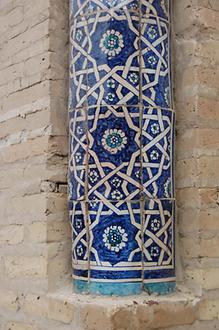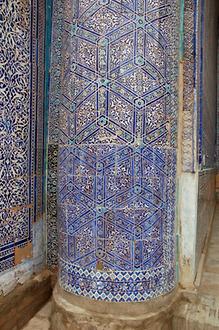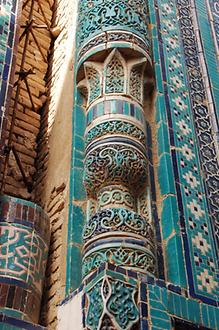Building with beautiful ceramic tiles#
by
All photos were taken by the author in the locations mentioned in the years 1985, 2001, and 2012. They are part of the archive "Picture-flood Jontes".
Since ancient times, it was usual to decorate luxurious buildings made of stone or bricks on the outside in a special way. The simplest, though the least permanent method was the facade painting. Dried and limed larger areas were designed either in secco technique or on still wet mortar plaster in fresco painting which made the decorations even more durable as it can be seen today in Romanesque or Gothic churches.
During the Renaissance, the so-called sgraffito („scratch coat“) was developed in Italy which then reached also Central Europe. A carbon black layer was plastered with lime mortar, in which the ornaments or figures were engraved and thus sharply contoured images were made visible .
The Baroque period preferred the stone which allowed sculptural depictions inside and outside. It brought a decorated momentum into architecture and diverted the attention directly upwards.
However, the Orient brought the ceramic tile that influenced the entire Islamic area. In all its diversity and options for combining huge building complexes such as mosques, Koran universities (arab. Madrasa), palaces and citadels it brought a durable blaze of colours. Moors brought the ceramic tiles to Western Europe. In Spain and Portugal with its Azulejos, the roots of this tradition are clearly seen still today. The name emphasizes the dominent colour of the tiles, the azure blue.
Before firing, the tiles are painted with a mixture of quartz powder and certain metal additions as oxides. In the oven the tiles receive their luster and colourfulness at high temperatures, their ceramic density and water resistance. Among metals, cobalt dominates. The Delft tiles also have this inimitable blue colour. The East Asian ceramic is dependent on such methods. The valuable cobalt was produced in large quantities in Thuringian and Saxon mountains and widely exported to Asia.
The tiles usually consist of finely divided square elements, each containing a part of an ornament. By combining, a large surface can be covered.
Tiles were intensively used for construction in Persia, but Uzbek ceramists brought the craftsmanship to its peak. Tiles were widely used in the Central Asian Uzbekistan with its cities Bukhara (Buxoro) Bukhara , Samarkand Samarkand and Chiwa (Xiva) Chiwa, Uzbekistan . All cities are situated on a main route of the Silk Road. In addition, the Islamic Persia was a model for the developing of Uzbek civilization. Persian was the language of the court and education. A modified Arab script with its calligraphy was also used as Persian writing. Therefore, it is not surprising that the architecture of Persia, the wonder land between the Front and Central Orient, was a model for Uzbekistan.
Uzbekistan was the home of famous mathematicians, astronomers and physicians in the Middle Ages. This humanistic and economic background allowed a phenomenal blossoming of culture.
Examples of large-area ornamental tile jewels show patterns of interconnections, alternations between straight-line and floral motifs, and the embedding of Arabic letterings. The development of the unbelievable phantasy of such tile decorations is also based on religious demands. The founder of Islam did not allow the depiction of humans, animals and even plants. This inspired the imagination of artists and architects in unexpected ways and led to the highest achievements of the art of writing and building decoration. However, these rules were not always followed word by word. If it had been followed, we would not have the magnificent miniature painting with its courtly-, battle- and hunting- scenes and with portraits of rulers.

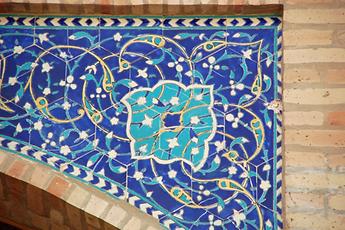

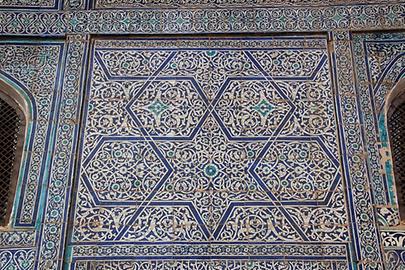
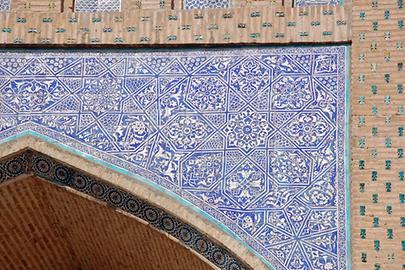
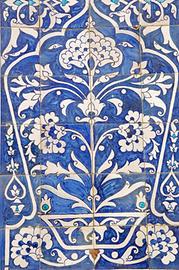
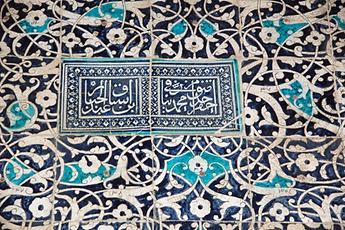
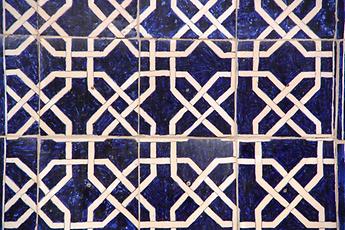
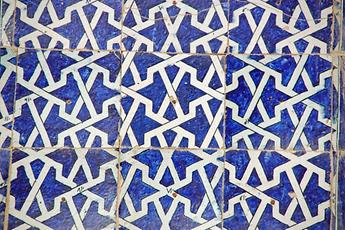
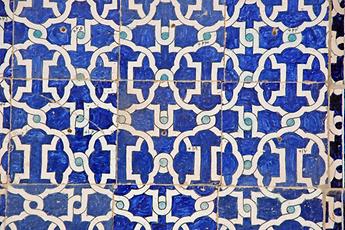
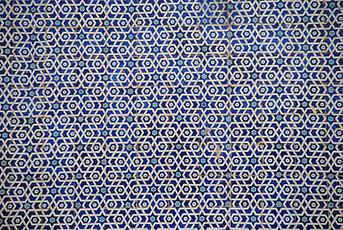
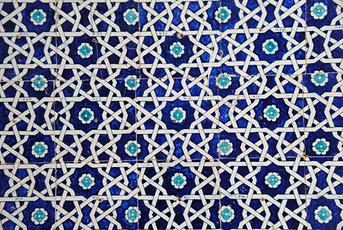
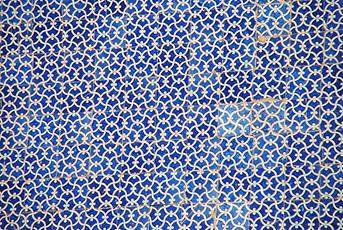

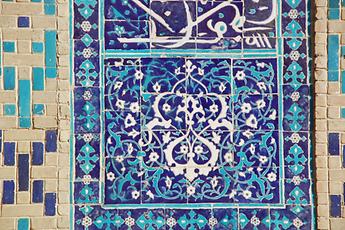
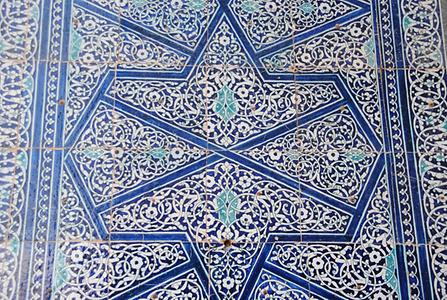



Chiwa – Minbar, the preaching pulpit in mosques, where during the Friday’s ritual the Imman is sitting on the second-last step, because the last step is reserved for the Prophet.


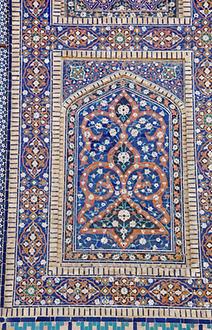

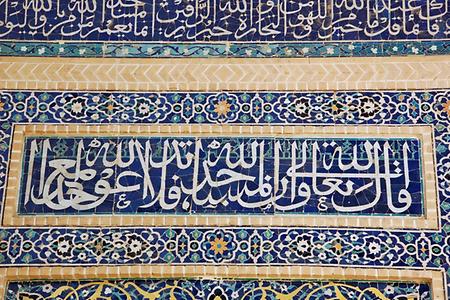
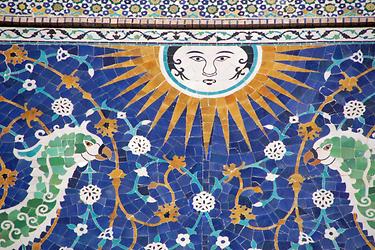
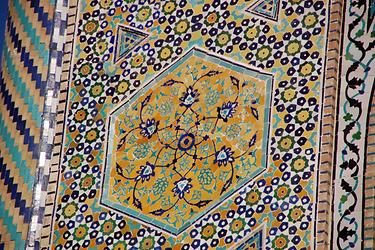
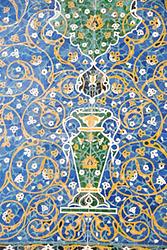


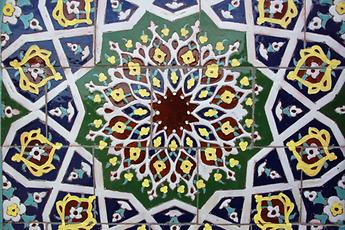


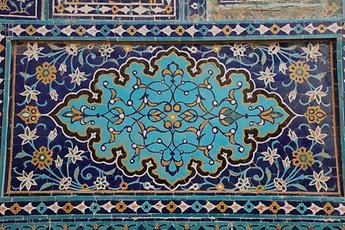

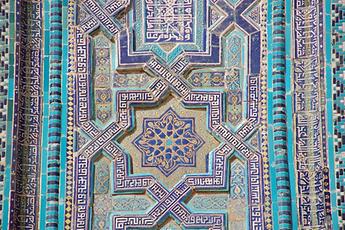


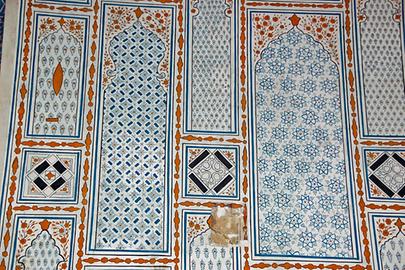
The relatively simple building lines gain in grandeur when decorated with ceramic tiles. Tashkent was devastated in 1966 by an earthquake that spared only few historic structures. The reconstruction adhered to the traditional contruction method. Impressive buildings emerged as the one shown, in which the oldest Koran of the world is exhibited. It belongs to the most important spiritual possessions of Uzbekistan.

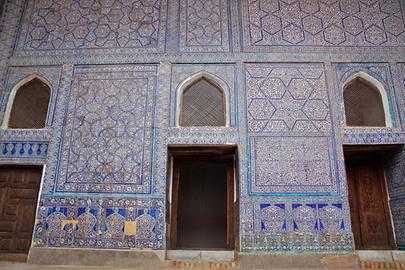
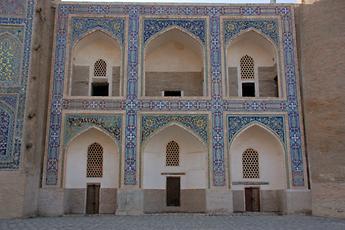
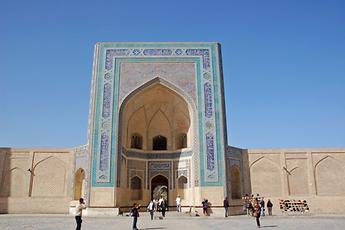
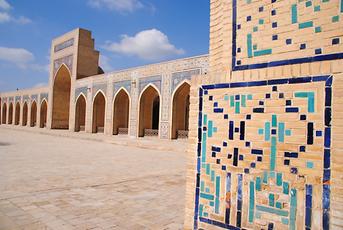

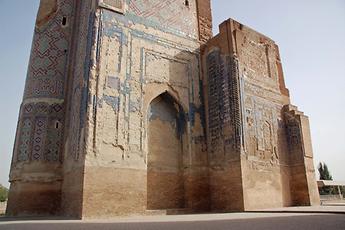
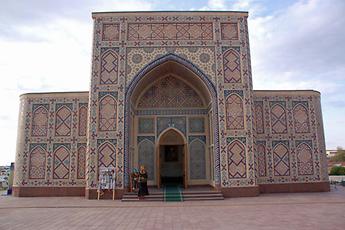
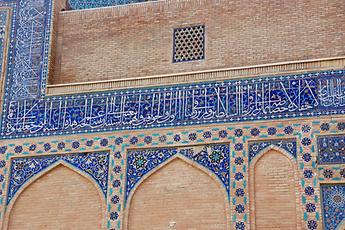
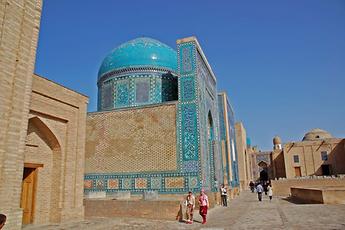
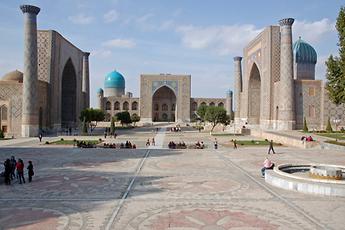

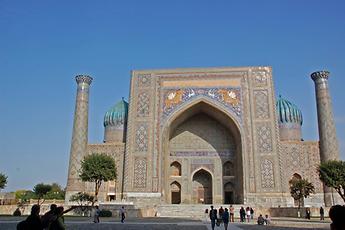
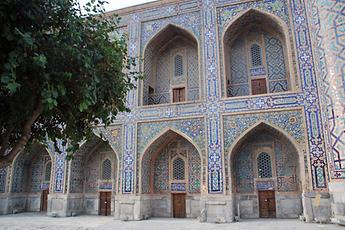
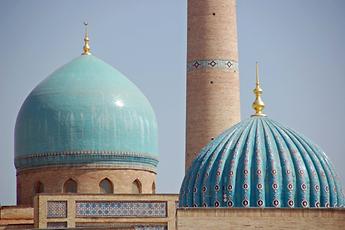
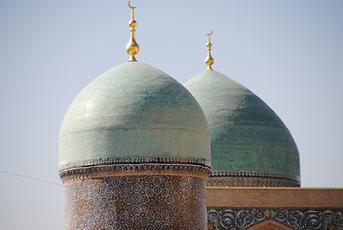
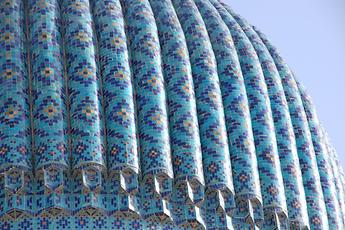
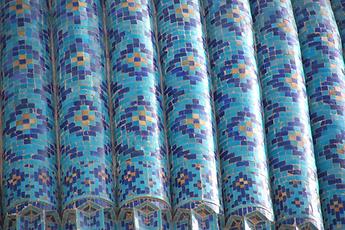
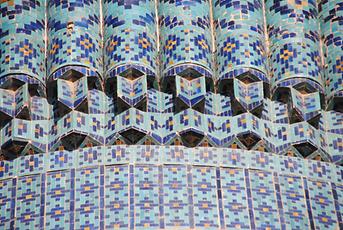


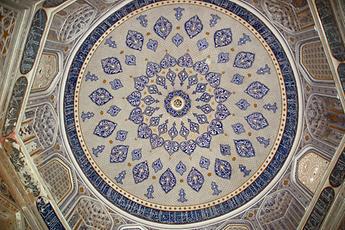
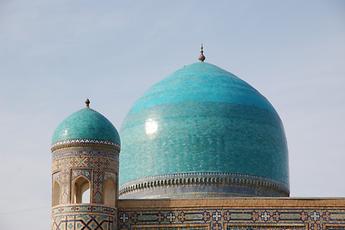
A Liwan or Iwan is a high, one-sided open hall with a barrel vault. Usually, it is the central entrance to a special building. It offered to architects a wide field for decoration with ceramic tiles. The Indian-Mogul architecture took over the Liwan and implemented it for the first time in the tomb of Humayun.
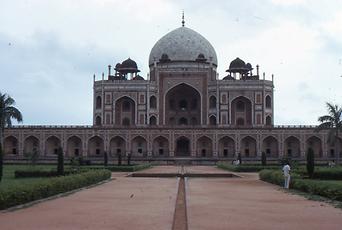
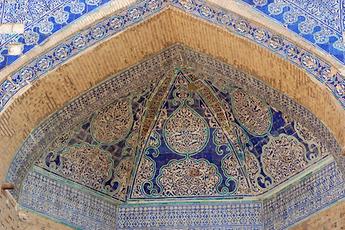
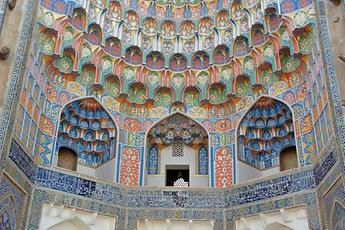

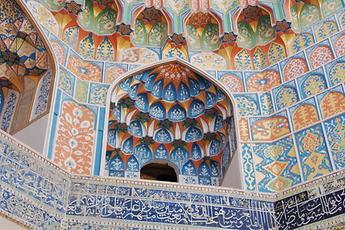
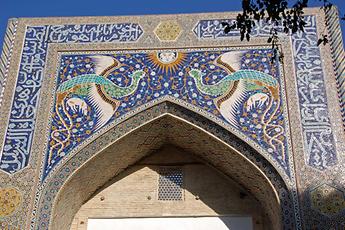


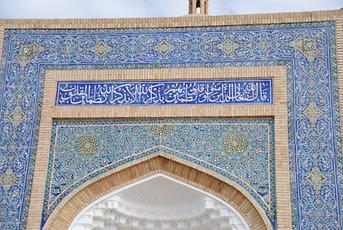

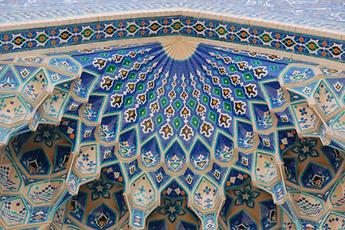
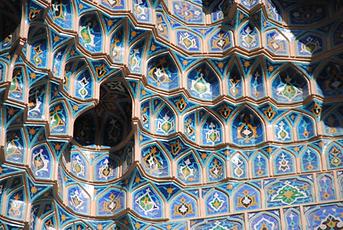
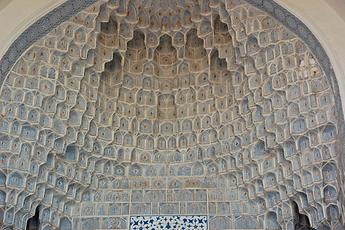

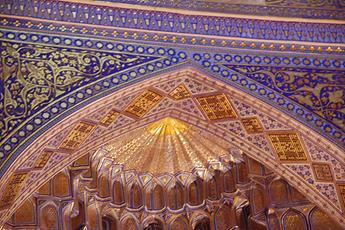
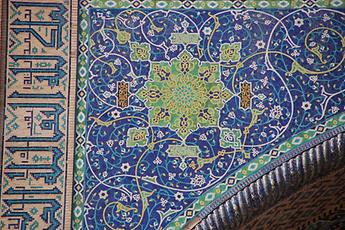
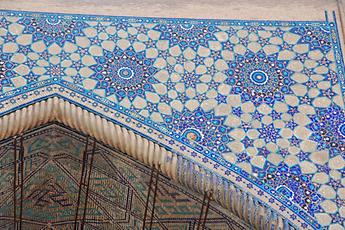
Religions need a signal system to initiate believers to perform cults. In Christianity, there are bells on appropriate towers or clocks. In Buddhism, as in Tibet, there are wind instruments or big bells, as seen in Southeast or East Asia. In Islam, the muezzin calls the believers to the compulsory five daily times of prayer from a high tower, the minaret. The word was originally used for a lighthouse (arab. Manara).
Until today, minarets are signs of Islamic religious claim to power. The signal towers were often also prestigious buildings, erected by rulers in giant size. The construction was stopped when it exceeded the architectural, political or economic abilities and possibilities.
One example of this is the Kalta Minaor in Chiwa, the lower diameter of which gives an idea about the intended size of the minaret. With planned 70 meters altitude, it would have been the most impressive minaret in Central Asia. The construction was stopped in 1852 when only 25 meters were reached.

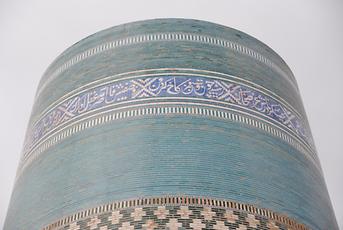
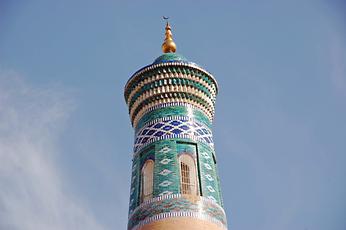
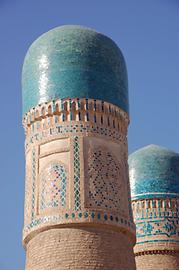
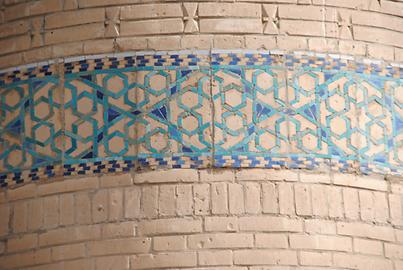

To a smaller extent than minarets columns are also predestined to be decorated with ceramic tiles and thus to emphazise static functions.
